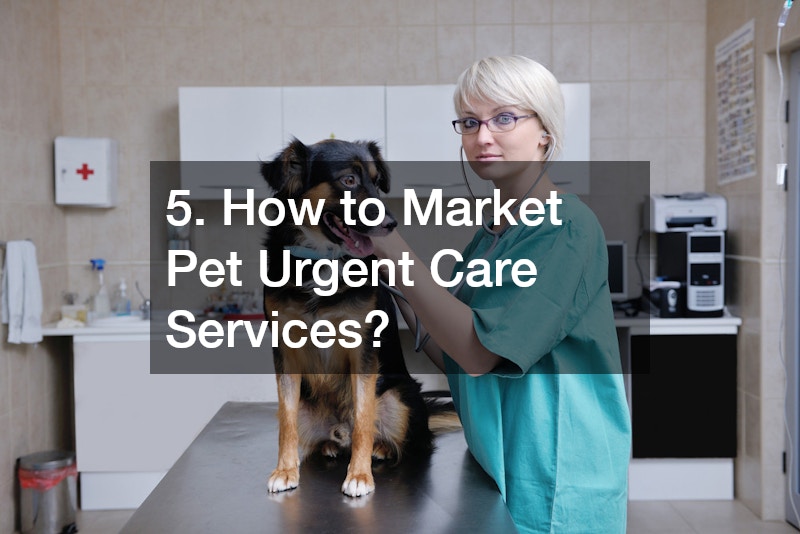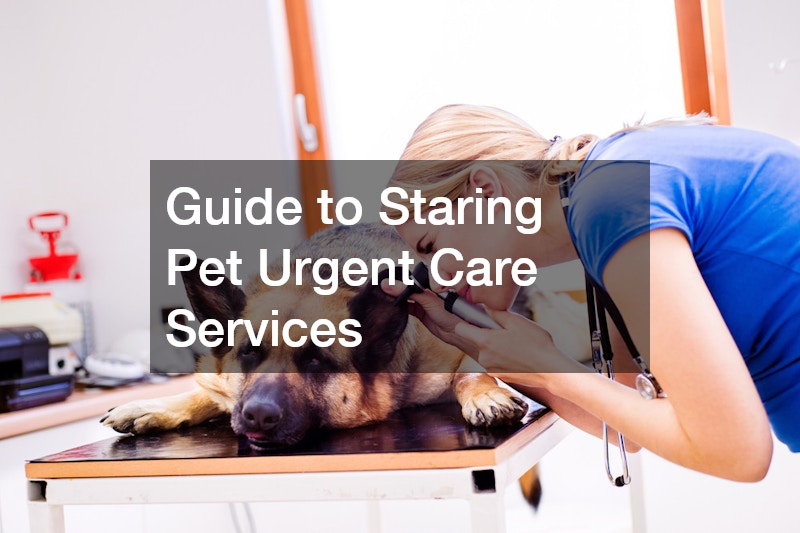In this comprehensive guide, we will explore the essential steps and considerations in starting pet urgent care services. As pet ownership continues to rise, so does the demand for immediate veterinary care during emergencies. This guide will provide the insights you need to successfully launch and manage a pet urgent care facility.
1. What Are the Initial Steps to Start a Pet Urgent Care Facility?
Understanding the Market Demand
Analyze the current local market demand for pet urgent care services, identifying competitors and potential clients. Conduct surveys to gather data on pet ownership trends and the frequency of emergencies encountered by pet owners.
Consider demographic factors like the average income level and pet ownership density in your area. Understanding these aspects is crucial for tailoring your services to meet the expectations and needs of the community.
Evaluate existing urgent care facilities to understand their service limitations and areas you can innovate. Positioning yourself strategically in response to current gaps can give you a competitive advantage.
Creating a Business Plan
Draft a comprehensive business plan, outlining your mission, services, financial projections, and marketing strategies. A robust business plan will guide your actions and keep your business on track when unexpected challenges arise.
It’s important to include detailed financial projections, estimating both start-up expenses and ongoing costs. Having a clear view of expected revenue and expenditure will help you secure funding if needed.
Integrate a marketing plan that highlights how you will attract and retain clients. Consider a mix of traditional and digital marketing strategies to reach a broad audience effectively and efficiently.
2. What Are the Legal Requirements and Licensing for Pet Urgent Care?
Obtaining Necessary Permits and Licenses
Research and apply for the required permits and licenses specific to veterinary and urgent care services in your area. Compliance with local laws is necessary to operate legally and avoid potential fines.
Approach local health departments or regulatory bodies to understand the specific veterinary regulations that may apply. Engaging with a legal advisor who specializes in veterinary law can ensure you meet all legal obligations.
Remember, the application process can be time-consuming, so it’s prudent to start this early in your planning phase. Securing the appropriate permissions is a fundamental step that should not be overlooked.
Understanding Zoning and Insurance Needs
Ensure your location complies with zoning laws and secure appropriate insurance coverage to protect your business. Zoning laws can affect where you can operate, and understanding them is crucial for choosing the right location.
Explore the types of insurance policies suitable for veterinary facilities, such as general liability and professional indemnity. Insurance is vital for safeguarding your business assets and ensuring continuity in the face of unforeseen events.
Discuss with an insurance broker to tailor a package that meets your unique operational risks and requirements. The right insurance coverage can offer peace of mind and allow you to focus on providing exceptional care.
3. How to Equip a Pet Urgent Care Facility?
Essential Medical Equipment and Supplies
List and acquire the necessary medical equipment and supplies needed for effective urgent pet care services. This includes diagnostic machines, surgical tools, and emergency care kits that are vital for treatment.
Consider investing in quality equipment that will last and provide accurate results to enhance the quality of care you offer. Having reliable equipment reduces downtime and ensures efficient operation of the facility.
Work with suppliers who specialize in veterinary equipment to access the latest technologies and innovations. Building partnerships with reputable vendors helps maintain a consistent supply of necessary resources.
Designing a Pet-Friendly Facility Layout
Create a welcoming and functional layout that addresses the needs of pets and owners during emergencies. Ensuring a spacious and stress-free environment contributes to better care and client satisfaction.
Factors such as waiting areas, examination rooms, and treatment zones should be carefully planned to prevent bottlenecks. An efficiently designed layout enhances the flow of operations and improves the overall experience.
Consider accessibility features for clients with disabilities, ensuring inclusivity and convenience for all visitors. A focus on safety and comfort aids in running a successful facility that clients trust and return to.
4. What Staff is Needed for a Pet Urgent Care Service?
Hiring Qualified Veterinary Professionals
Identify the necessary qualifications and hire experienced veterinarians and veterinary technicians. Skilled professionals contribute significantly to the credibility and success of your urgent care services.
Emphasize hiring staff with specialized training in emergency and urgent care to handle the demands of a high-pressure environment. Their expertise is crucial in delivering prompt and effective treatments.
Training and Staff Management
Implement a training program and management strategies to ensure that staff provide high-quality care. Continued education and skill enhancement should be a priority in your management approach.
Create performance metrics and feedback loops to maintain high standards and motivate your team. An open and supportive work environment can significantly boost morale and productivity.
5. How to Market Pet Urgent Care Services?
Online Marketing Strategies
Develop a strong online presence through a professional website, social media, and digital advertising. An engaging and informative website can attract pet owners seeking urgent care services online.
Use social media platforms to connect with pet communities, share helpful content, and promote your services. Digital advertising can enhance your reach, targeting pet owners within your geographic location.
Building Community Relationships
Engage with the local community and establish relationships with pet owners and other veterinary businesses. Networking within the community can facilitate referrals and increase your facility’s credibility.
Host educational workshops or pet health camps to share valuable insights and build trust with the community. Active community involvement enhances your reputation and demonstrates your commitment to pet welfare.


